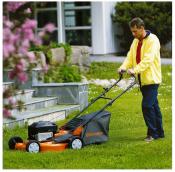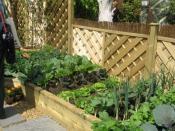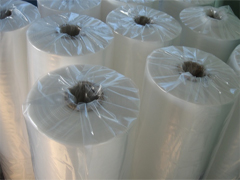Search
Login
JUNIOR SITE
How to plant and prune a fruit tree
Everyone on the plot has fruit plantings, if not, then with the advent of the season we will purchase one or another variety of fruit trees for planting, and not everyone knows how to pick and plant correctly, due to the lack of certain knowledge, experience and skills.
With the advent of spring, many begin to think about where to start, how to choose a breed, variety and how to place them correctly. The specific ratio of breeds and varieties depends on the size of the infield and its location.
It should be remembered that fruit trees have been growing in one place for many years, and mistakes made during placement and planting are sometimes difficult to correct.
When obtaining an individual plot, it is important to know where the new construction of the house, other utility buildings, and the place of the future garden will be.
It's no secret that many build houses, mansions of large size and practically there is little land left for planting fruit plantations.
see also:
Garden layout
The best part of the plot, the most illuminated and protected from cold winds, is reserved for the garden and orchard. Planning the placement of garden crops is not an easy task. No need to rush to start work on the allotted land. The layout, in addition to the specific distribution of places for all types of crops, should also take into account the future. The chaotic arrangement of plants will lead to the fact that after a few years some plants will grow abundantly and begin to inhibit others, which will ultimately lead to the death of the latter. In addition, not all plants get along with each other. In order for the garden and the garden to bring joy, a high-quality and plentiful harvest, it is necessary to determine the place of each culture with extreme accuracy and take care of its neighbors that it prefers.
see also:
Site preparation for planting
Cultivation of the garden and the garden should begin with preliminary preparation of the soil. Initially, work is being done to eradicate the rhizomes of perennial weeds, uprooting stumps. Then uneven areas are leveled and proceed to direct tillage.
There are several methods of cultivation depending on the type of soil. Digging the soil is the main operation in the preparation process. Dig the soil every year in spring or autumn. Autumn digging is considered more effective, because clods of earth are devastating by frost, wind, snow and rain.
Digging is divided into types: simple and two-tier. Simple digging, or single-tier, is used for most soils with a deep fertile layer. Digging takes place to the depth of the bayonet shovel. The ground from the first furrow is poured on the opposite side of the site.
see also:
Placing on a plot of garden and garden crops
There are certain rules for the location of plants and the choice of food area on the site - this increases the quality and quantity of the crop. Thickened or sparse plant placement reduces the possibility of a high yield. With an increase in the area of \u200b\u200bnutrition, the yield from one plant will increase, but the total yield will decrease.
A thickened arrangement at first gives a high percentage of yield, but the yield from one plant will approach the minimum, which leads to a general decrease with constantly deteriorating quality.
Density of distribution in most cases is determined by soil fertility. Fertile soil needs more thickening - this does not affect the quality and quantity of products.
Before planting fruit, berry and vegetable crops, you first need to draw up a plan for the placement of these plants. When drawing up the plan, the location of the outbuildings and the size of the plot should be taken into account.
see also:
Tillage tools
Tillage is carried out throughout the time when the soil is not covered with snow.
Autumn and spring cultivation consists in digging the soil. For these activities, the most applicable are shovels, forks and rippers.
Shovel
Shovel is a universal tool. It can rightfully be considered tool N 1 for the garden plot. Shovels are different, they differ from one another by the length of the handle and the size of the blade.
For autumn soil preparation, a shovel is considered the best tool, because in winter, the soil should remain in a coarse state (the effect of frost will be most effective). It is possible to achieve a large-lumpy or lumpy soil structure only when digging with a shovel (when replacing a shovel with garden forks, the lumps of soil are destroyed and the cultivated land is soon compacted).
see also:
Greenhouse construction
A greenhouse is more complex in design than a greenhouse. It is a room with transparent walls and a roof. Its construction involves the use of lighting and heating systems, as well as a ventilation system.
The main problem of greenhouses is the lack of winter and excess summer sunlight. In order to solve it, when planning a greenhouse, it is necessary to consider at what time of the year its more intensive use is expected.
Summer greenhouses are arranged in the shade to avoid overheating of soil and plants. With winter greenhouses, it’s quite the opposite: they are arranged in such a way that as much as possible daylight penetrates into them.
see also:
Materials for the construction of greenhouses
Depending on the principle of the structure of the greenhouse, a wide variety of materials can be used: wooden beams, boards, battens, logs, metal pipes, corners, bricks, clay, plastic film or glass.
For the manufacture of frames using wood, steel or aluminum corners and pipes, fiberglass or black plastic pipes and much more.
The cheapest and most convenient option is a wooden greenhouse. To extend its service, all wooden surfaces are treated with an antiseptic solution or drying oil, and then painted with oil paint.
Basically, for the construction of frameworks, slats 15x70 mm thick and 20x80 mm wide are used, as well as beams with a width and thickness not exceeding 10 cm. The wood, as a rule, should be from coniferous and deciduous trees.
see also:
Dimensions and lighting of greenhouses
Before you start choosing and building a greenhouse, you need to consider some factors, for example, how much space there is in your summer cottage and your height. The minimum height of the structure in the cornice is 1, 6-1, 7 m, and in the ridge - 2, 2-2, 4 m.
It must also be borne in mind that the higher the room, the lower the temperature differences, and therefore the microclimate for plants is more favorable.
As a rule, greenhouses are built 3-4 m long, and rooms up to 5-6 m are much less common. The width of the protected soil depends on how many beds it is planned to place there. For example, if there are two beds 1 m wide in the greenhouse with a passage between them of 45 cm, then the total width of the greenhouse should be at least 2.5 m.
The door width is 0, 7 m, height 1, 7 m. However, for convenience, you can change the settings to apply to a particular person.
Some photophilous plants need additional artificial lighting. These include tomatoes) cucumbers, lettuce, bell peppers, etc.











